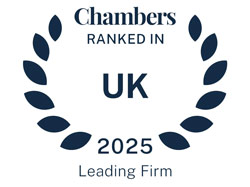Top ranked special educational needs solicitors
It is international Down syndrome awareness day on 21 March 2017. To help raise awareness, we are writing a series of articles about Down syndrome and education. Today we are looking at the common educational characteristics of a child with Down syndrome.
What is Down syndrome?
In the UK, about one in every 1,000 babies is born with Down syndrome, or trisomy 21. Down syndrome is a genetic condition caused by an extra copy of the chromosome 21. People without Down syndrome have two copies of chromosome 21, whereas those with Down syndrome have three copies.
Most babies with Down syndrome are diagnosed at birth by their physical appearance. Babies with Down syndrome tend to have floppy limbs or hypotonia, upwards slanting eyes, a small mouth with a protruding tongue and a flat back of the head.
Although there is not a clear explanation for why some children are born with Down syndrome, studies have shown that mothers over the age of 40 have a 1 in a 100 chance of having a child with Down syndrome. This is considerably higher than younger mothers who have a 1 in a 1,500 chance of having a child with Down syndrome.
Education
Aside from the physical and health characteristics of a person with Down syndrome, all children with Down syndrome have learning difficulties ranging from mild to moderate. Only rarely is Down syndrome associated with severe cognitive impairment.
Common cognitive and behavioural conditions may include:
- Short attention span
- Impulsive behaviour
- Slower ability to learn
- Delayed language and speech development
Around one in every 10 children with Down syndrome also experience additional difficulties, such as Autism Spectrum Disorder or Attention Deficit Hyperactivity Disorder.
An Education, Health and Care Plan (“EHCP”) is a legal document that ensures children with SEN and disabilities, including Down syndrome, receive the support they need at school. The EHCP identifies the child’s needs, states what support the child needs and sets specific outcomes that the child should be meeting each year. Children with Down syndrome may require additional 1:1 support if they are in a mainstream setting, or need particular support from a Speech and Language Therapist, Physiotherapist and Occupational Therapist, which should be included in their EHCP.
I am so happy at the outcome, I don't think we would have had such a comprehensive service from any other law firm, and you took the worry away...I do not regret a single second of the whole process, apart from the bit before you got involved.
James' mother, Boyes Turner client
Contact our expert specialist education solicitors today for support with your claim



